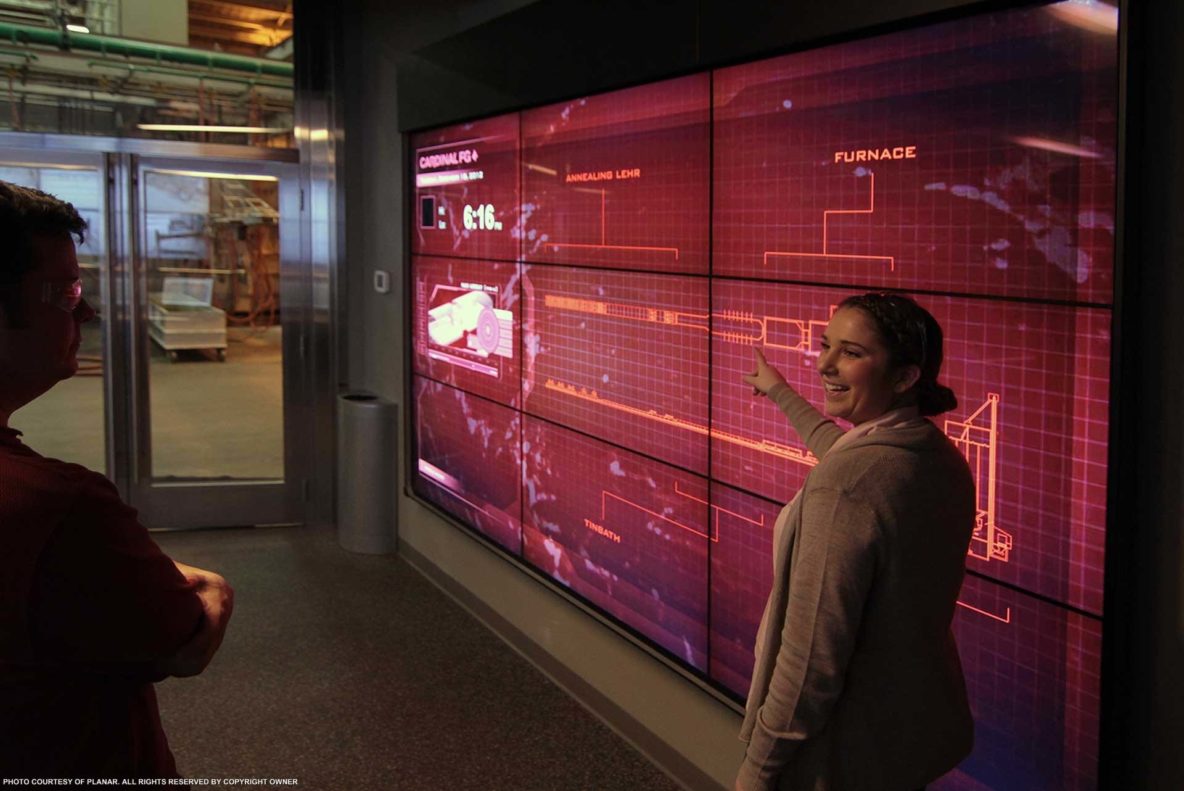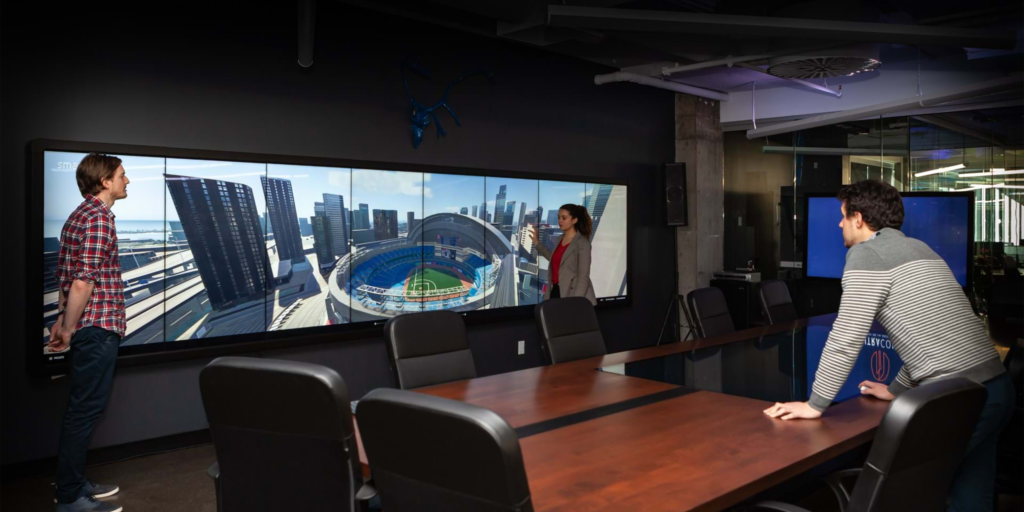
Today’s workplace is more complex than ever before, making it increasingly important for companies to not only have the right tools, but the right environments to support their new-age workforces. However, striking the right balance between technology and design to create positive workplace experiences is becoming more difficult as the workplace continues to dramatically shift. Gensler revealed that workplace effectiveness across all work modes is at an all-time low, and it’s largely due to ineffectual workplace designs.
Technology and design can work together to create a great workplace environment, but that’s only possible with the right expertise. Simply providing a space with innovative tools isn’t enough to enable teams to do their best work and make lasting relationships with end-customers. To design a remarkable, technology-advanced workplace you need to understand your client, assess how they embrace agile working and use those considerations to incorporate the right technology seamlessly into design.
Consider the Client’s Brand
Workspace design and technology have a significant impact on how an organization is perceived by both staff and clients. In the same way an employee represents a brand at networking events, an office’s design and technology package has the power to say a thousand words about an organization’s culture, mission, and values.
A client’s working environment is the face of their business, thus it should reflect the brand experience they aim to convey. For example, a company dedicated to forward-thinking, creativity, and collaboration would most likely benefit from an open floor plan featuring smart office accessories and collaboration tools. When our team designed the technology for the Booz Allen Hamilton Innovation Center, within a completely open layout, various techniques were used to ensure the integration matched the organization’s entrepreneurial and innovative spirit. Digitally adjustable ceiling microphones, motorization, and lighting controls were just a few of the technologies we utilized to emphasize the brand.
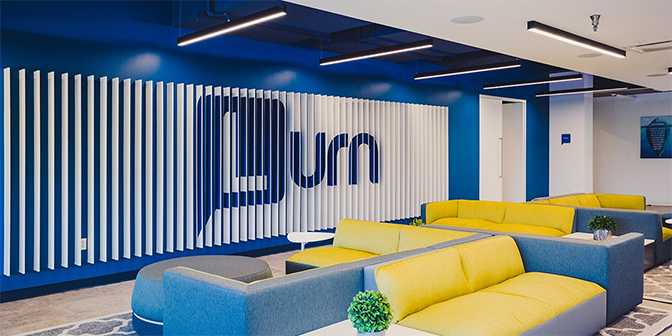
No matter, designing office spaces with the right technology that embodies your client’s brand and culture is one of the most important things you can do to make a great workplace environment.
Treat Digital Displays like Architecture Materials
Nowadays people expect interesting public places, which is why there’s so much buzz around using digital signage as an interactive design element. Featuring digital displays within office design can no longer be an afterthought. Instead, digital displays should be treated like any other thoughtful, well-designed, and purposeful architectural material.
By combining the dynamism of state-of-the-art audiovisual technologies with the place-making of architectural design, you can design workplaces that tell a story. Here are a few examples of what’s possible:
Use Technology to Create a Dynamic, Interactive Experience
One of the most popular office design trends of 2020 has been reactive and motion-activated media architecture and for good reason too. These types of audiovisual displays move, respond, and acknowledge people’s presence, delivering striking, unexpected content to enhance the natural energy of a space. Use reactive and motion-activated media architecture to elevate people’s journeys through your clients’ buildings, transforming the simple activity of entering the workplace into an exciting event.
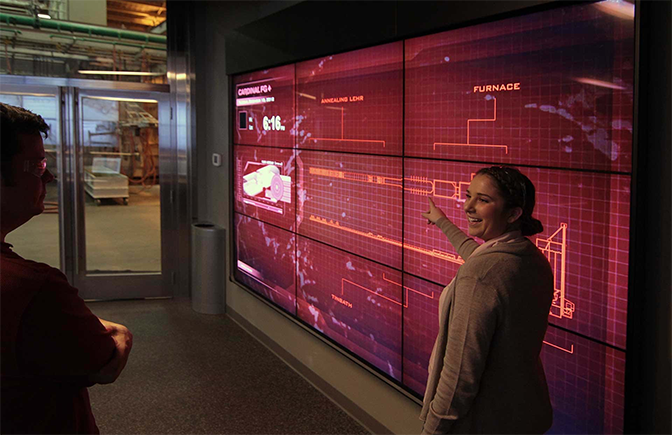
Enhance the Workplace with Smart Lighting and Shading Design
The surroundings in a workplace are critically important because they have a direct impact on daily performance. That’s why you must think about lighting and shading design beyond illumination. These design choices ultimately hold an influence over how space occupants think and feel. Therefore, consider how you can maximize workplace performance and well-being with smart lighting and shading design.
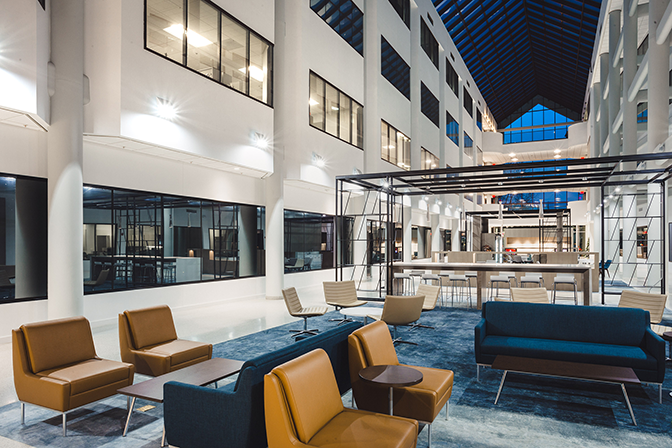
Start with your client’s daily work functions. What kind of lighting will be conducive to their normal work output? Do their daily tasks require any special lighting or shading considerations? Next, consider the workspace itself. Let’s say your client’s office is on the smaller side. It’d be wise to use lighting that adds depth to the space, creating a spacious and relaxed ambiance. Understanding their work functions as well as workspace will provide you a framework to plan smart lighting and shading design.
Create Flexible Workspaces
Traditionally, enterprises have opted for open or cubicle style office spaces, but choosing one over the other is no longer useful to the way people work today. As reported by Gensler, 43% of people work in a variety of spaces throughout the day. Thus, workspaces need to be designed to support today’s flexible workforces.
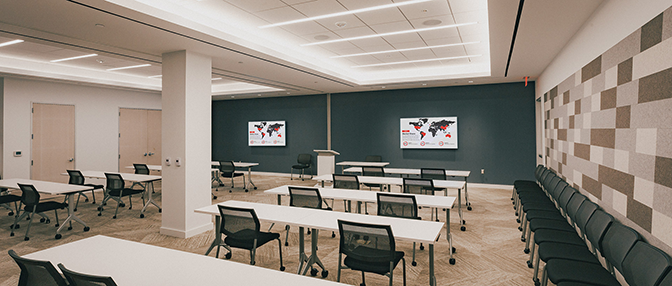
You can create flexible spaces, sometimes used as open spaces, and sometimes separated, with the aid of technology. For instance, say you’ve assessed that your client frequently holds small or sudden team meetings with inadequate presentation tools in an open office setting. Huddle rooms with wireless displays and videoconferencing technology would be ideal for ad-hoc meetings and eliminating outside distractions.
Moreover, as more organizations implement remote work policies, flexible workspaces with the right smart collaboration tools are going to be more important than ever.
Final Thoughts
There’s a wide variety of possibilities for seamlessly integrating audio, video, and lighting technologies into a building’s design to create an immersive and interactive experience for its inhabitants. The possibilities to create customized experiences and bring stories to life through design will only continue to expand as technology advances. This is why it’s so crucial for designers to know how to wisely use technology as an architectural material.
Are you ready to help transform your clients’ workplace environments into an experience? Schedule a conversation with one of our experts to learn more about our builder partner program.
Join the Casaplex Design-Build Partner Program
Differentiate your bid package by incorporating innovative technology solutions with your designs. Our partner program includes:
- Courses to provide education on seamless integration between technology and your interior and building design
- CEU courses
- Exclusive events with our technology partners
- Access to state-of-the-art technology design tools
- Preferred access to Crestron Design showrooms
- Referral incentive of 5% of retail value earned on qualified projects
- Discounts on technology upgrades, including 75% off MSRP on qualifying products for your office, showroom or home.
To join the partner program or find out more, fill out the contact form.
Builder Partner Program
Fill out the contact form to join the Casaplex partner program or find out more.
